Search the Special Collections and Archives Portal
Search Results
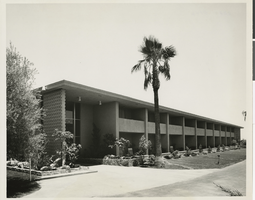
Photograph of the Hollywood Park guest wing at the Sands Hotel (Las Vegas), 1950s
Date
Archival Collection
Description
Hollywood Park - one of five two-story buildings which housed guests at the Sands in the 1950s. The five buildings were all named after famous American racetracks.
Site Name: Sands Hotel
Address: 3355 Las Vegas Boulevard South
Image
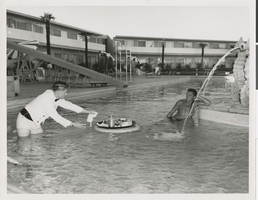
Photograph of a waiter serving breakfast in the Dunes Hotel swimming pool (Las Vegas), 1955
Date
Archival Collection
Description
Waiter in half-swim attire serving a guest in the pool. Stamped on original: "Las Vegas News Bureau. Las Vegas - Nevada. Photographers: Don English - Joe Buck - Jerry Abbott;" Staple holes in bottom left corner.
Site Name: Dunes Hotel
Address: 3355 Las Vegas Boulevard South
Image
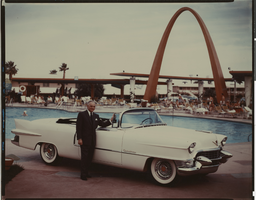
Photograph of Wilbur Clark and Cadillac poolside at the Desert Inn (Las Vegas), mid 1950s
Date
Archival Collection
Description
Wilbur Clark standing next to a Cadillac by the Desert Inn Pool.
Site Name: Desert Inn
Address: 3045 Las Vegas Boulevard South
Image
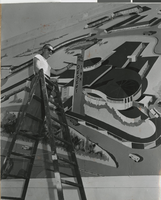
Photograph of a painter touching up a model of the planned Desert Inn Hotel and Casino (Las Vegas), circa 1949
Date
Archival Collection
Description
Billboard showing the planned Desert Inn Hotel and Casino. Smudges of red paint left on photograph.
Site Name: Desert Inn
Address: 3045 Las Vegas Boulevard South
Image
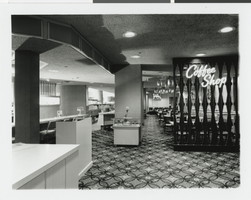
Photograph of the coffee shop in the Mint (Las Vegas), circa 1960
Date
Archival Collection
Description
An exterior view of the coffee shop inside of the Mint Hotel in downtown Las Vegas.
Site Name: Mint Las Vegas
Address: 128 East Fremont Street
Image
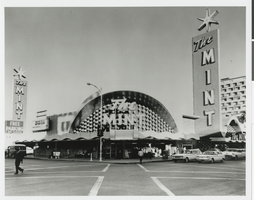
Photograph of the Mint before the high rise addition (Las Vegas), before 1964
Date
Archival Collection
Description
Photograph of the façade of the Mint Hotel before the addition of the high rise addition.
Site Name: Mint Las Vegas
Address: 128 East Fremont Street
Image

Photograph of the Union Plaza tower under construction (Las Vegas), 1971
Date
Archival Collection
Description
View of the tower of the Union Plaza under construction. From photo sleeve: "Frontal view of Union Plaza Hotel about a third of the way done. (May 4, 1971)." Stamped on original: "Union Pacific Photo Division - Public Relations. 5480 Ferguson Dr., Los Angeles, CA 90022. May 4 1971"
Site Name: Union Plaza
Address: 1 South Main Street
Image

Photograph of the Jockey Bar in the Stardust Hotel (Las Vegas), circa early 1970s
Date
Archival Collection
Description
The Jockey Bar in the Stardust Hotel before renovations were made in the mid 1970s.
Site Name: Stardust Resort and Casino
Address: 3000 Las Vegas Boulevard South
Image
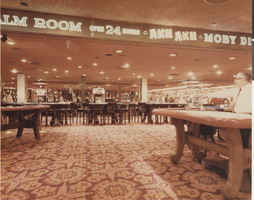
Photograph of the Stardust Hotel casino floor (Las Vegas), circa early 1970s
Date
Archival Collection
Description
Casino in the Stardust before renovations were made in the mid 1970s.
Site Name: Stardust Resort and Casino
Address: 3000 Las Vegas Boulevard South
Image
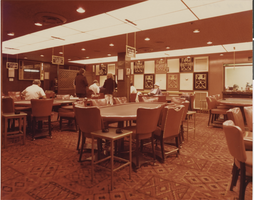
Photograph of table games in the Stardust Casino (Las Vegas), circa early 1970s
Date
Archival Collection
Description
Table games in the Stardust Casino prior to renovation in the mid 1970s.
Site Name: Stardust Resort and Casino
Address: 3000 Las Vegas Boulevard South
Image
